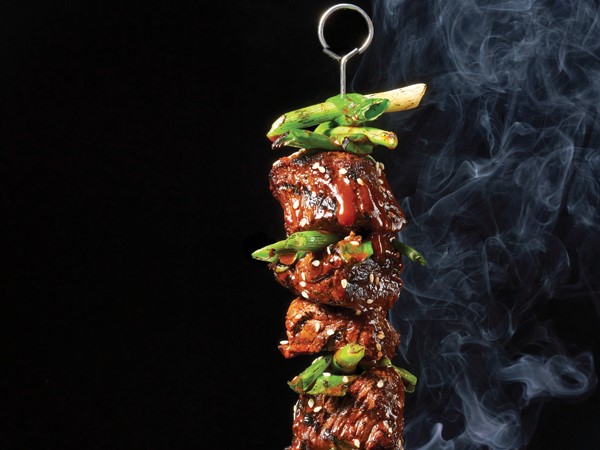Description
Explore flavors from around the world without leaving your backyard! Simple, yet saturated with flavor, grilled kabobs are a global favorite and are steeped in history. Skewer up your favorite seafood or meat along with fruit and veggies and learn where these flavors first made their debut. Bring these unexpected flavors to your backyard barbecues!
Mexico
To Mexican dishes with Middle Eastern influences include tacos al pastor (meat cooked vertically in a spit oven) and tacos de alambre (skewered grilled meat). Swap in seafood for a lighter touch then add traditional Mexican spices like cumin
India
Original Indian Kabobs were made with ground meat and influenced by flavors of Central Asia. Hallmarks of current Indian fare are rich sauces and complex spice mixes such as garam masala, which often consists of more than 20 spices.
Sweeden
Swedish meatballs, like kabobs, surprisingly may have Turkish origins. It is said Swedish King Charles XII returned from exile from the Ottoman Empire in the early 1700s with the recipe for Turkish meatballs (kofte) in hand.
Italy
Tuscan recipes embrace the Italian essence of country cooking and often use farm and garden stables such as tomatoes, peppers, and zucchini. Tuscan kabobs continue this tradition, and even include crusty bread—an Italian countryside staple.
Korea
A kabob-like maekjeok traces back to between 37 BC and 668 AD in Korea. To modernize this dish and add a depth of flavor, incorporate gochujang, a fermented chili paste made from soybeans.
Tunisia
Traditional African spice mixes are made with cloves, chili powder, coriander, caraway, and fennel seeds to robustly season meat. Mild grains, legumes, and nuts play a supporting role. These kabobs incorporate harissa—a Tunisian spicy pepper paste.

